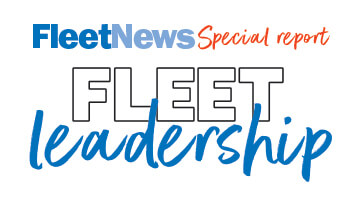Cost management to ensure the most appropriate vehicle acquisition methods and company car policies are in place are critical decisions fleets must get right.
And the recession has spawned a new business culture that, according to fleet experts, necessitates a wholesale review of existing vehicle provision and choice lists.
However, those same experts say that in some cases there is not the appetite to do it.
As a result, some policies still hark back to the boom years when, in many cases, HR departments ruled and corporate excess was fashionable, leading to demand for company cars that were frequently more of a fancy benefit than a working tool.
Consequently, given the variability in the current cost of borrowing money and changes in emissions-based vehicle-related taxes, fleet operating costs may be slipping out of control.
Mark Sinclair, director of fleet funding company Alphabet, claims that more than at any time, the company is being asked to help businesses “fundamentally reassess” their fleet provision.
“Not only has the economic climate changed dramatically but the cumulative effects of higher emissions-based taxes are starting to hit home. Businesses can see their fleet costs continuing to rise in future unless they take action now,” he says.
And Gary Killeen, fleet commercial leader at GE Capital UK, says that in the current climate fleet managers can drive strategic change with opportunities to “contain costs considerably”.
Fleet consultant Stewart Whyte, managing director of Fleet Audits, says: “If fleet managers don’t keep a lid on costs then they will only rise. Intelligent fleet managers who realise that looking at the actual cost of the fleet is a good idea will probably be able to identify savings of between 5% and 15%.”
Savings can typically be divided into two areas: measures that can be introduced overnight and far-reaching changes in company car strategy as a result of a funding and choice list review, which take longer.
Funding experts recommend that fleet choice lists should be compiled around vehicle wholelife costs while ensuring those same company cars are fit for purpose.
David Rawlings, a director of fleet financial solutions provider Vertivia, argues that in reviewing company vehicle provision, fleet bosses have decisions to make before they compile choice lists.
He explains: “Companies should analyse each driver and ask what is the most cost-effective mobility solution? Fleet managers must become more driver focused than fleet focused.”
Rawlings says: “Fleet managers must understand the role the employee has within the business and their mileage profile.
"Only once that is understood can wholelife cost methodology be applied to vehicle choice.”
But, evidence suggests that many companies do not have accurate mileage records and that traditional company car policies follow a one-size-fits-all format in terms of grading structure and replacement cycle.
Vitally, as wholelife costs vary depending on how a vehicle is funded, best practice advice suggests that businesses should link their funding choice to their wholelife cost decision-making, incorporating corporate tax relief based on discounted cash flow to give a fair comparison.
Rawlings says: “Too many companies review funding routes, but do not review choice lists and vice-versa.”
Providing the optimum car-related benefits package for employees is all about companies making the right choice while balancing a range of often-conflicting issues, according to ALD Automotive.
The ultimate company car choice list is compiled by taking into account funding, list price, wholelife costs, engine size, carbon dioxide emissions, fuel type, fuel consumption and insurance group as well as the tax implications for drivers and the business.
Mike Waters, director – market insight at Arval, says: “Without taking a holistic approach to vehicle selection, it is easy to make the wrong decisions, which can significantly increase fleet costs. That’s why using wholelife costs to inform selection is essential in getting vehicle choice right.”
After acquisition/depreciation, fuel is the second highest cost of vehicle ownership, says Waters: “Selecting efficient vehicles is an important way of reducing running costs.
“Good MPG performance will not only save at the pumps, but will also bolster residual values.”
But, he warns: “The primary consideration should be whether a vehicle is fit for purpose. Any cost savings are negated if the vehicle does not meet its day-to-day needs.”
Due to a combination of the vast range of low emission models available and the new capital allowance rules that makes 160g/km of CO2 a critical figure, setting a CO2 ceiling for fleet choice lists is becoming popular.
It’s a trend spotted by Gilbert, who says: “Customers are now very aware that by keeping emissions under this amount (160g/km) they are not only ticking their environmental box, but they are making significant cost savings due to the tax penalties incurred by high emission vehicles.”
Killeen adds that such a move would inevitably marginalise models such as 4x4s and sports cars, but low-emission models would attract used car market demand on defleet.
But Sinclair warns: “The message that lower CO2 equals intrinsically lower costs and lower taxes is now starting to gain traction. But at the same time, businesses are realising that simply capping CO2 emissions is only half the battle.
"They know they also need to get down to basics to understand who they’re giving cars to and why.
“Getting the right things right at the heart of car strategy has never been more important.”
Wholelife costs
Wholelife costs (WLC) represent the most effective way of operating and managing a fleet/allocation policy because it provides the best forward estimate of the real costs to the business, in delivering business mileage.
WLC reflect all the projected, vehicle-specific costs associated with operating a vehicle over its fleet life, including depreciation, funding, service, maintenance and repairs, VED, insurance, fuel (for the business mileage), Class 1A NIC payments and also VAT on the fuel scale charge for private use if this is provided.
If the vehicle is contract hired, then the rental will normally include the depreciation, funding, service, maintenance and repairs and VED. Costs can be shown as per annum, per month, or per mile.
Case study: British Airways
British Airways’ 100-plus sales staff are now driving Honda Civic Hybrids after a board-inspired environmental fleet strategy review revealed the cars to be the most appropriate from a wholelife cost perspective.
The top-down car strategy, driven by chief executive Willie Walsh and chairman Martin Broughton, is also enabling the airline to reduce its fleet carbon footprint by a third.
However, unlike many policy switches that see company cars changed at the end of existing replacement cycles, BA introduced the new fleet immediately with the help of leasing supplier Master- lease.
The move was aimed at reducing emissions per car from around three to two tonnes of carbon dioxide per year.
Although swift, the process had to be achieved in parallel with keeping costs neutral and ensuring driver motivation was maintained and that the whole workforce shared the broader company environmental objectives.
The savings were possible because BA’s environment and procurement teams looked for not only lower driver emissions, but the CO2 impact of the vehicle in relation to its wholelife cycle – from its manufacture and delivery, to its use and ultimate disposal.
Based on the existing fleet renewal cycle, it would have taken until October 2011 for the last vehicle to be replaced by the Civics.
But Masterlease, which has been BA’s fleet supplier for more than a decade, terminated the previous fleet in advance of the contracted expiry date so that all vehicles were changed by autumn last year at no net cost to BA.
Masterlease was also able to reduce the renewal cycle on the Civics from 48 months to 36, also at no cost to BA, which is in line with the company’s overall green strategy of keeping newer, cleaner cars on the road and ensuring that the fleet benefits from any forthcoming improved technology, sooner rather than later.
Initially, Masterlease approached 15 vehicle manufacturers asking them to nominate their cleanest vehicle(s) with an initial target of CO2 emissions of less than 130g/km as well as data on other emissions and fuel economy to give an all-round environmental performance.
Masterlease scored the vehicles by each category and compiled a shortlist of the four cleanest.
Each was nominated for having less than120 g/km – thereby falling into the 10% (for petrol) company car tax band.
The four carmakers – Ford, Honda, Toyota and Volkswagen – presented to BA with the aim of demonstrating that their product had the lowest carbon footprint from cradle to grave.
Clive Forsythe, sales and marketing director for Masterlease, says: “The objective of the exercise was to get the most environmentally friendly vehicle currently available and look at it from a wholelife perspective.”
Mal Murphy, procurement general manager at BA, says: “We had set targets not only to cut emissions in the air but also on the ground and each driver will be reducing their carbon footprint by one third every year through this strategy.
“It was started at the very top by the chairman and chief executive with the aim of being carbon and cost neutral in the process.”


















Login to comment
Comments
No comments have been made yet.